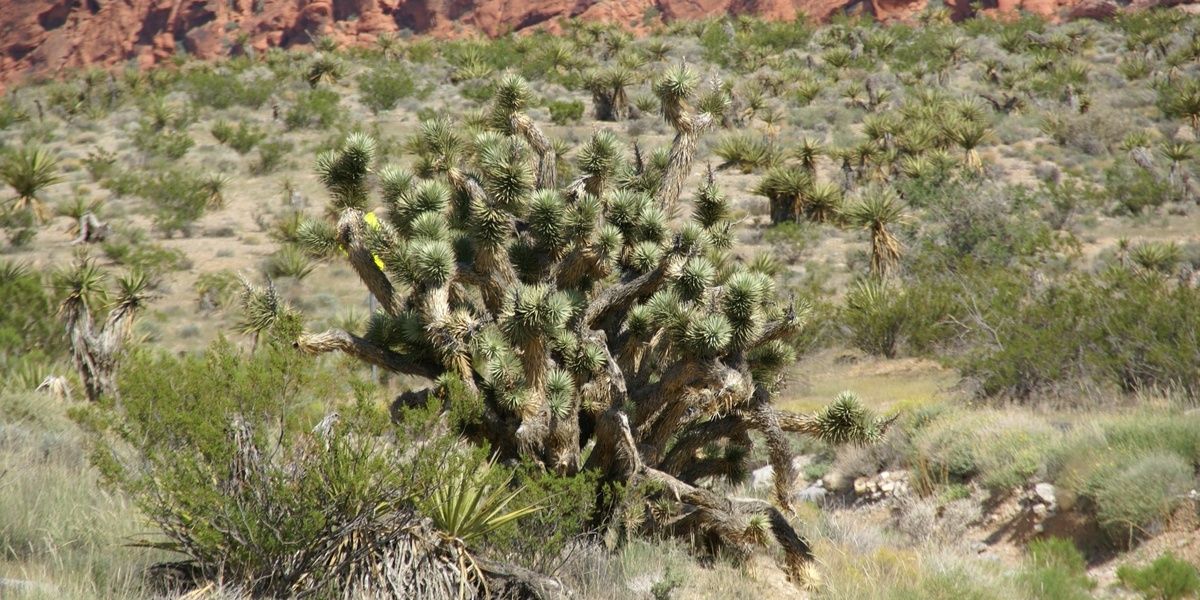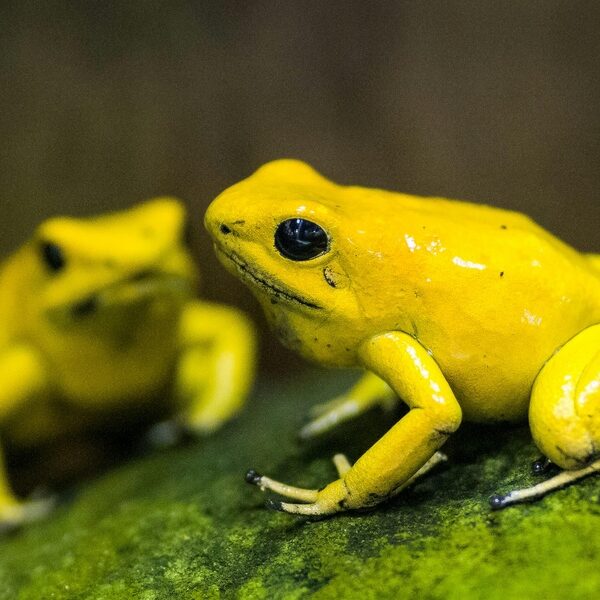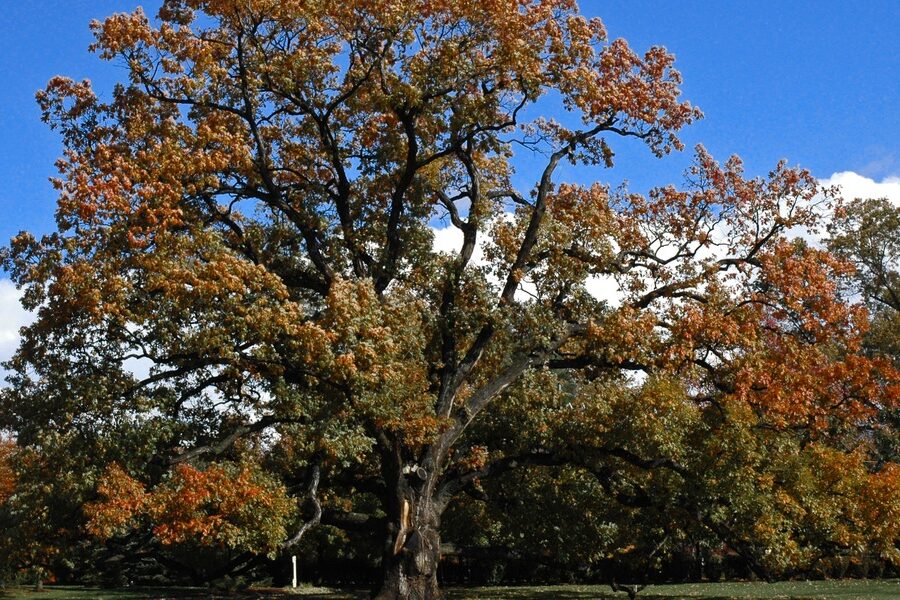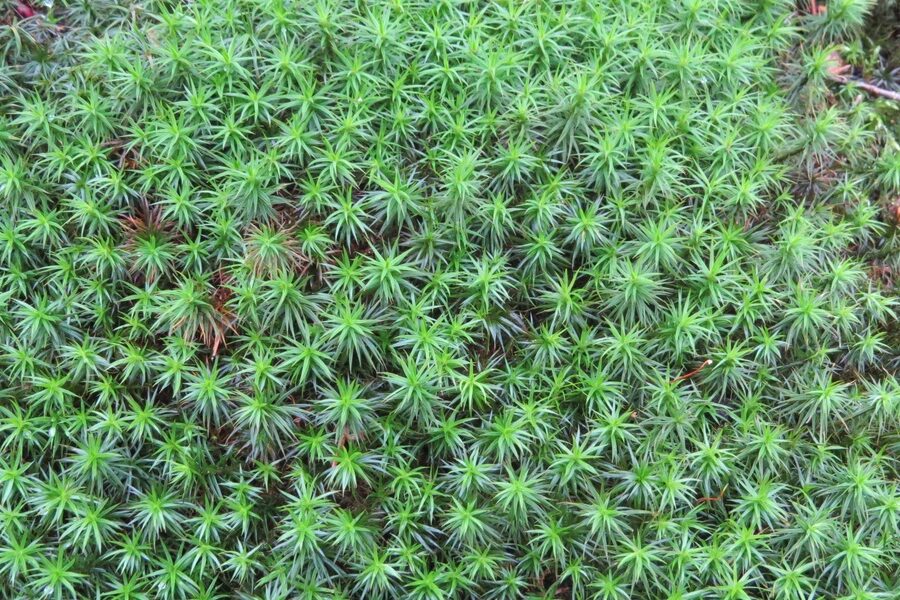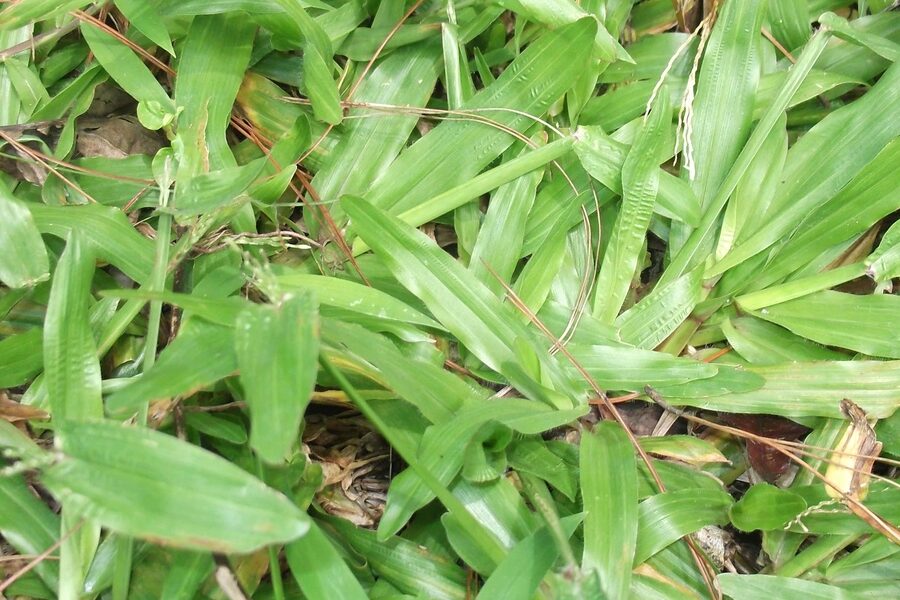Desert landscapes hold a surprising variety of trees adapted to heat, sparse rain and harsh soils. From roadside windbreaks to shade in urban oases, these species shape ecosystems and offer practical benefits like erosion control and habitat for wildlife.
There are 38 Desert Trees, ranging from Algarrobo (Argentine Mesquite) to Wild Olive. For each species you’ll find below Scientific name,Native range,Mature height (m) to help you compare origins and expected size—useful for planting, restoration or just learning about these hardy trees—you’ll find below.
Which desert trees work best for low‑water landscaping?
Choose species suited to your local climate and soil—native trees are usually the safest bet. Look for deep-rooted types (mesquites, acacias), small-leaved or deciduous species (some olives, palo verdes) and those with a proven track record in your region; check the Scientific name,Native range,Mature height (m) entries below to match size and origin to your site.
How do these trees survive extreme heat and drought?
Most tolerate stress through deep or extensive roots, reduced leaf area or tough, reflective bark, and by dropping leaves in severe drought; many also store water in stems. Planting in correct soil, mulching and giving established trees occasional deep watering improves survival and long-term health.
Desert Trees
| Common name | Scientific name | Native range | Mature height (m) |
|---|---|---|---|
| Palo Verde | Parkinsonia microphylla | Sonoran Desert, SW USA & NW Mexico | 6.00 |
| Velvet Mesquite | Prosopis velutina | SW USA & N Mexico | 12.00 |
| Honey Mesquite | Prosopis glandulosa | SW USA & N Mexico | 10.00 |
| Screwbean Mesquite | Prosopis pubescens | Sonoran Desert, SW USA & N Mexico | 8.00 |
| Tamarugo | Prosopis tamarugo | Atacama Desert, N Chile | 10.00 |
| Algarrobo (Chilean Mesquite) | Prosopis chilensis | Coastal Andes, Chile & Argentina dry valleys | 18.00 |
| Algarrobo (Argentine Mesquite) | Prosopis flexuosa | Dry Chaco & Monte regions, Argentina | 10.00 |
| Ironwood | Olneya tesota | Sonoran Desert (AZ, CA & NW Mexico) | 9.00 |
| Camel Thorn | Vachellia erioloba | Kalahari & southern African arid plains | 12.00 |
| Umbrella Thorn Acacia | Vachellia tortilis | Sahel, Sahara margins & Arabian Peninsula | 8.00 |
| Mulga | Acacia aneura | Arid interior Australia | 8.00 |
| Catclaw Acacia | Senegalia greggii | SW USA & N Mexico | 6.00 |
| Shepherd’s Tree | Boscia albitrunca | Kalahari & southern African drylands | 8.00 |
| Desert Date | Balanites aegyptiaca | Sahel, Sudan & Arabian drylands | 10.00 |
| Christ’s Thorn Jujube | Ziziphus spina-christi | N & E Africa, Arabian Peninsula | 8.00 |
| Indian Jujube | Ziziphus mauritiana | South Asia & arid tropics | 10.00 |
| Athel Tamarisk | Tamarix aphylla | N Africa, Middle East & S Asia | 12.00 |
| Toothbrush Tree | Salvadora persica | Sahel, Arabian Peninsula & S Asia | 6.00 |
| Russian Olive | Elaeagnus angustifolia | Central & W Asia; naturalized arid N America | 8.00 |
| Wild Olive | Olea europaea | Mediterranean & Middle East drylands | 8.00 |
| Carob | Ceratonia siliqua | Mediterranean semi-arid coasts | 10.00 |
| Ana Tree (Winterthorn) | Faidherbia albida | Sahel, E & S Africa, Arabian margins | 15.00 |
| Baobab | Adansonia digitata | Sahel & dry tropical Africa | 10.00 |
| Australian Boab | Adansonia gregorii | NW Australia dry tropics | 8.00 |
| California Fan Palm | Washingtonia filifera | SW USA desert oases | 20.00 |
| Date Palm | Phoenix dactylifera | Middle East & N Africa oases | 20.00 |
| Utah Juniper | Juniperus osteosperma | Great Basin & Colorado Plateau (US) | 8.00 |
| One-seed Juniper | Juniperus monosperma | SW USA & N Mexico high deserts | 7.00 |
| Single-leaf Pinyon | Pinus monophylla | Great Basin semi-arid high deserts | 6.00 |
| Caper Tree | Capparis decidua | Thar Desert & Indian subcontinent arid zones | 6.00 |
| Peruvian Pepper Tree | Schinus molle | Dry Andean valleys; widely naturalized arid regions | 10.00 |
| Moringa (Arabian) | Moringa peregrina | Red Sea coasts, Arabian Peninsula drylands | 8.00 |
| Manila Tamarind | Pithecellobium dulce | Dry tropical Americas & introduced arid tropics | 8.00 |
| Casuarina (She-oak) | Casuarina equisetifolia | Coastal arid tropics (Indo-Pacific) | 15.00 |
| Pistacia Atlantica | Pistacia atlantica | Mediterranean & Middle East semi-arid hills | 12.00 |
| Tamarisk (Saltcedar) | Tamarix ramosissima | Eurasia & N Africa arid river margins | 8.00 |
| Prosopis (General mesquite) | Prosopis spp. | Arid Americas, Africa & introduced tropics | 12.00 |
| Fouquieria (Ocotillo) | Fouquieria splendens | Sonoran & Chihuahuan Deserts (SW USA & Mexico) | 4.00 |
Images and Descriptions
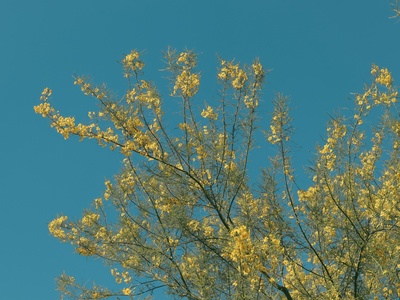
Palo Verde
A small, green-barked desert tree that drops leaves in drought, showing bright yellow spring flowers. Extremely drought-tolerant; used as shade, street tree and accent in xeriscapes, requiring little supplemental water once established.
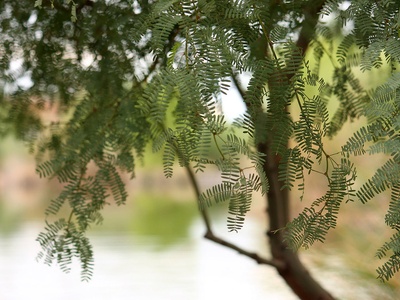
Velvet Mesquite
Classic desert mesquite with feathery foliage and deep roots that tap groundwater. Very drought-adapted, provides shade, nitrogen-fixing benefits and wildlife forage; commonly used for windbreaks, restoration and low-water landscapes.
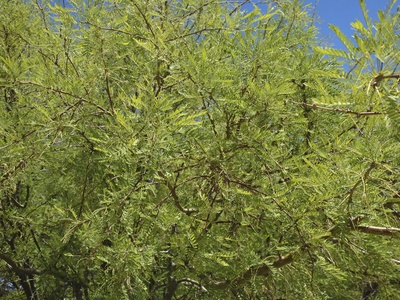
Honey Mesquite
A widespread mesquite with twisted branches and bean-like pods. Tolerant of extreme heat and low rainfall; used for shade, firewood, native landscaping and erosion control in arid yards and rangelands.
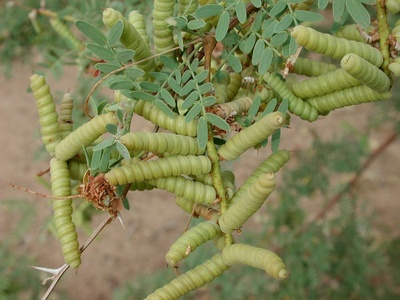
Screwbean Mesquite
Small to medium mesquite notable for coiled, screw-like pods. Highly drought-resistant and tolerant of alkaline soils; used in desert revegetation, livestock forage and as a small shade tree in dry gardens.
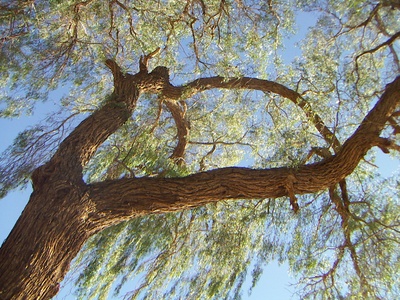
Tamarugo
A mesquite adapted to hyperarid Atacama conditions, surviving on deep groundwater. Extremely drought-hardy; used historically for timber, shelterbelts and soil stabilization in some of the driest places on Earth.
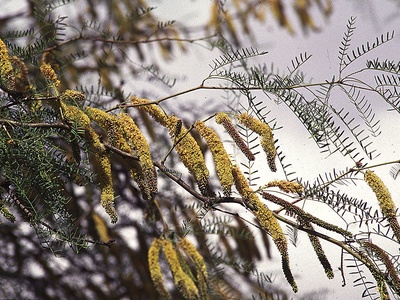
Algarrobo (Chilean Mesquite)
Large, long-lived tree of arid Andean valleys with dense shade and edible pods. Very drought-tolerant; valued for charcoal, fodder, erosion control and as a street or orchard tree in arid South America.
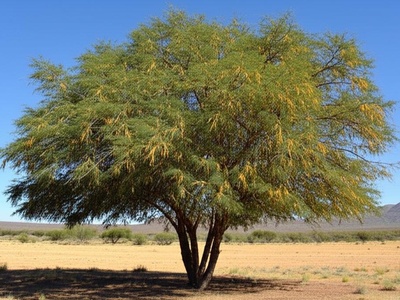
Algarrobo (Argentine Mesquite)
Hardy, drought-adapted legume producing sweet pods and open shade. Common in South American drylands; used for fodder, fuelwood, shelterbelts and low-water landscaping.
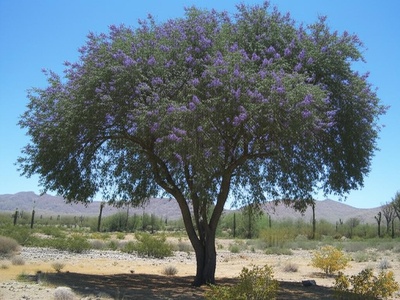
Ironwood
Slow-growing, dense-wooded tree with gray trunk and long-lived canopy; blooms with lavender pea-flowers. Extremely drought-tolerant and long-lived; prized for habitat value, desert gardens and native restoration projects.
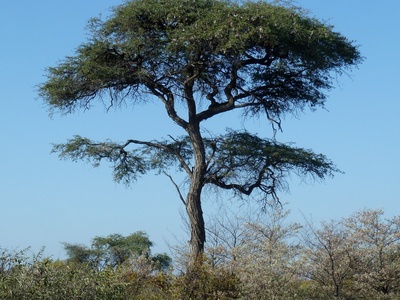
Camel Thorn
Sturdy thorny tree with spreading crown and deep roots that access dry soils. Highly drought-adapted; supplies shade, shelter, browse and durable timber in arid African landscapes and rangelands.
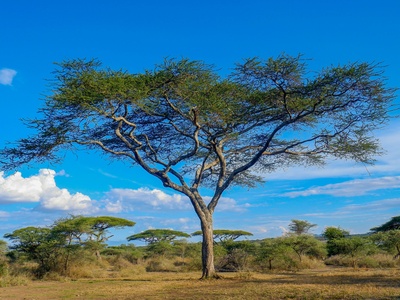
Umbrella Thorn Acacia
Iconic flat-topped acacia of African drylands, drought-deciduous with thorny branches. Extremely tolerant of heat and low rainfall; used for shade, fodder, salt-tolerant shelterbelts and land rehabilitation.
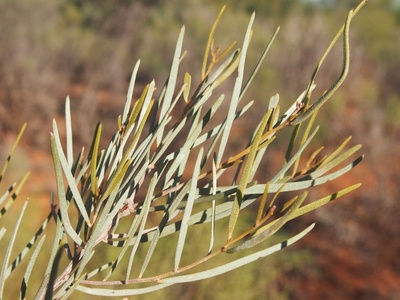
Mulga
Dominant small to medium tree of Australian deserts with tough foliage and fire-adapted habits. Very drought-hardy and salt-tolerant; used in dryland revegetation, grazing systems and as a low-water native landscape specimen.
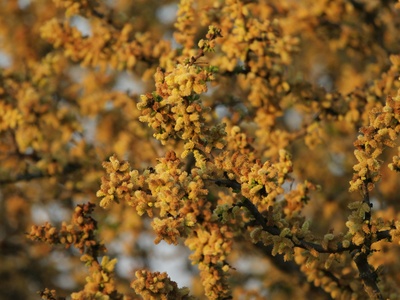
Catclaw Acacia
Spiny, party-branched desert tree with small leaves and fragrant flowers. Extremely drought-adapted, common in washes; used for erosion control, wildlife habitat and as a hardy shade plant in xeriscapes.
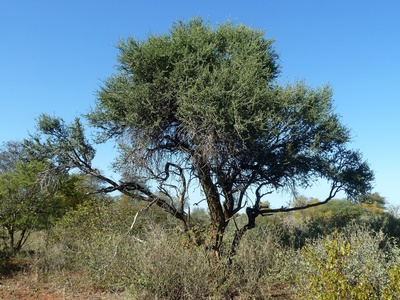
Shepherd’s Tree
Hardy, evergreen tree with deep roots and dense canopy that survives severe drought. Valued for shade, livestock browse and as a keystone species in arid African savannas and desert margins.
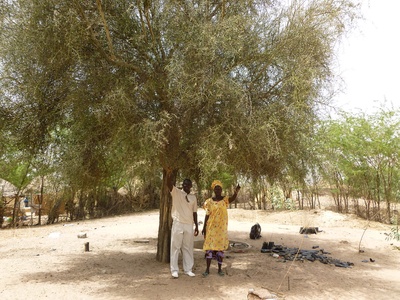
Desert Date
Tough thorny tree with edible oily fruit and high drought tolerance. Common in semi-arid Africa and Arabia; used for food, oil, medicine, shade and as a resilient agroforestry species.
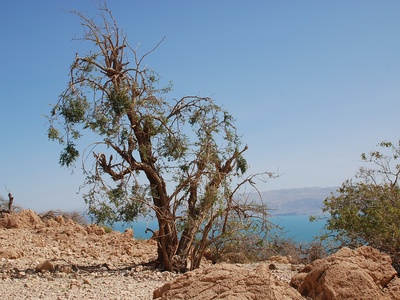
Christ’s Thorn Jujube
Hardy, spiny tree producing small edible fruit; tolerates high heat, drought and saline soils. Used for shade, fodder, traditional medicine and street plantings in arid regions.
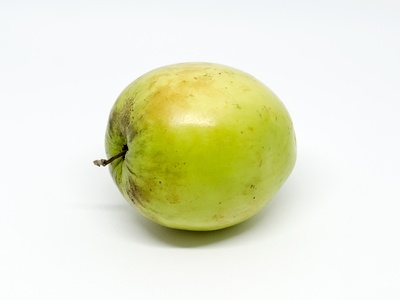
Indian Jujube
Drought-tolerant fruit tree common in dry tropical regions; produces sweet edible fruit and dense shade. Widely used in low-water orchards, agroforestry and rural shelterbelts.
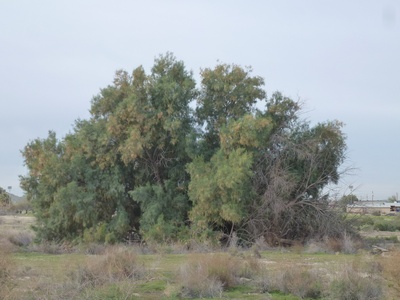
Athel Tamarisk
Salt- and drought-tolerant, feathery-branched tree often used as windbreak and shade in arid regions. Rapid growth and deep roots make it useful for stabilization though it’s invasive where introduced.
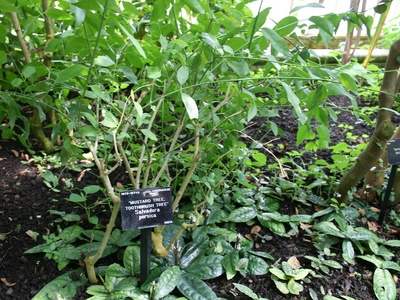
Toothbrush Tree
Small, drought-hardy tree with succulent-like leaves and edible berries; twigs traditionally used for oral hygiene. Useful in waterwise gardens, living fences and dryland village plantings.
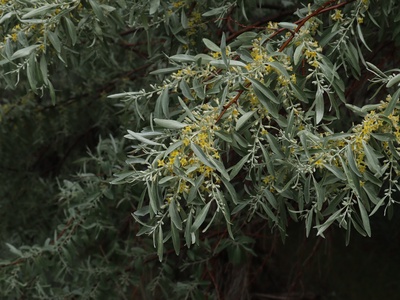
Russian Olive
Tough, silvery-leaved tree that thrives in dry soils and riparian corridors within deserts. Very drought-tolerant and nitrogen-fixing; used for windbreaks, shade and soil stabilization, though invasive in some regions.
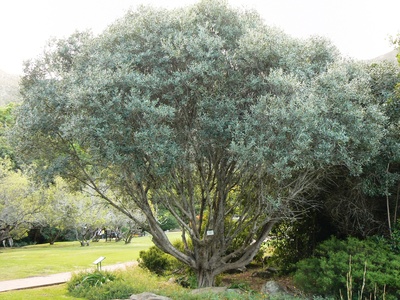
Wild Olive
Slow-growing evergreen adapted to hot, dry summers and poor soils. Valued for edible fruit and shade; commonly used in Mediterranean xeriscapes, terraces and drought-tolerant orchards.
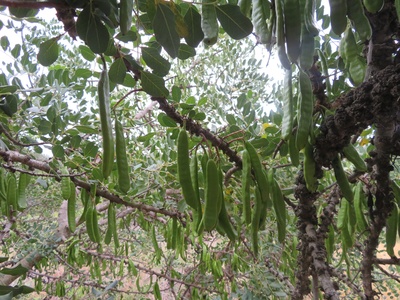
Carob
Broad-crowned evergreen legume that tolerates heat, drought and calcareous soils. Grown for edible pods, shade and soil stabilization in low-water Mediterranean and semi-arid landscapes.
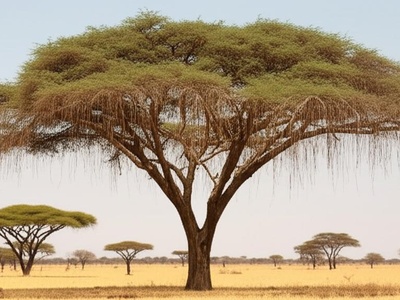
Ana Tree (Winterthorn)
Unique acacia that drops leaves in rainy season; deep-rooted and extremely drought-tolerant. Widely used in agroforestry for shade, fodder, soil improvement and dryland farming systems.
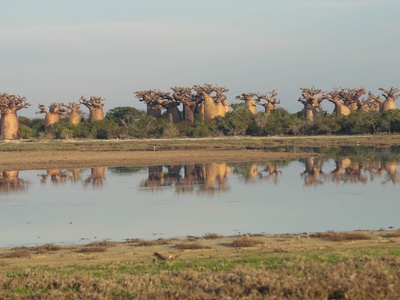
Baobab
Massive water-storing trunked tree of dry African landscapes, tolerant of long droughts and seasonal rainfall. Valued for edible fruit, shade, cultural uses and as a striking specimen in arid parks and restorations.
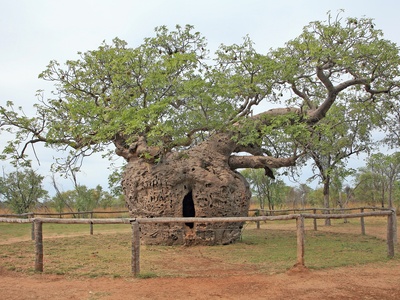
Australian Boab
Smaller baobab relative adapted to long dry seasons; stores water in trunk and tolerates heat and drought. Used as a cultural and landscape specimen in Australian arid gardens and dry reserves.
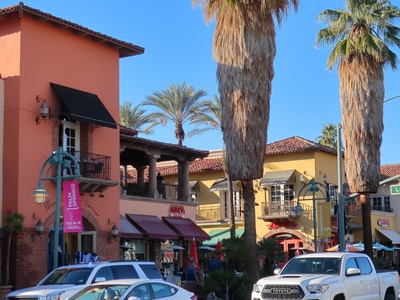
California Fan Palm
Native desert palm of oasis habitats, tolerant of heat and seasonal drought when groundwater is present. Iconic for desert landscapes and restoration around springs; used as specimen, shade and for habitat.
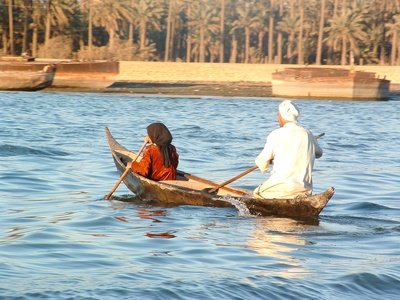
Date Palm
Historic desert oasis tree adapted to hot, arid climates with deep water access; produces edible dates. Widely planted in arid agriculture, shade avenues and xeric ornamental landscapes where groundwater is available.
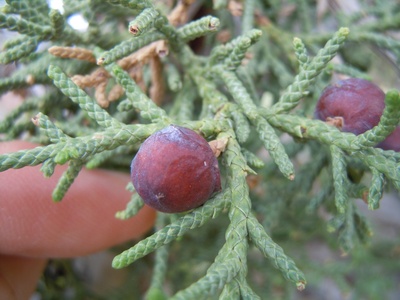
Utah Juniper
Slow-growing conifer tolerant of cold, wind and very low rainfall; forms open woodland in high deserts. Used in erosion control, wildlife habitat plantings and low-water native gardens.
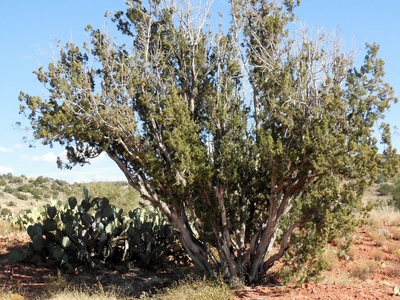
One-seed Juniper
Drought-hardy, shrubby-to-small tree conifer with dense evergreen foliage. Important in pinyon-juniper communities; used for low-water landscaping and habitat restoration on arid slopes.
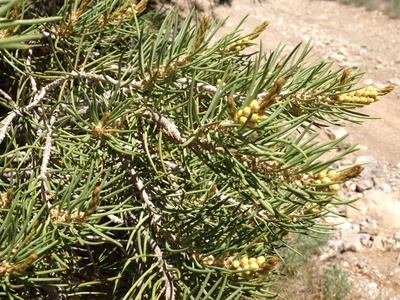
Single-leaf Pinyon
Small pine adapted to dry, rocky soils and cold desert nights; produces edible pine nuts. Used for native woodland plantings and xeric landscaping at higher-elevation deserts.
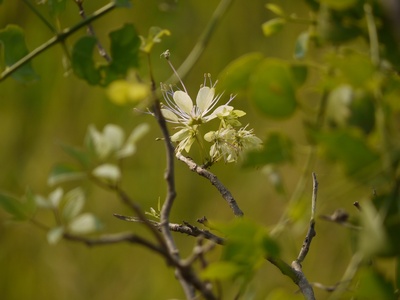
Caper Tree
Spiny, drought-deciduous tree with small leaves and fragrant flowers. Thrives on minimal rainfall and poor soils; used for fodder, living fences, erosion control and dryland agroforestry.
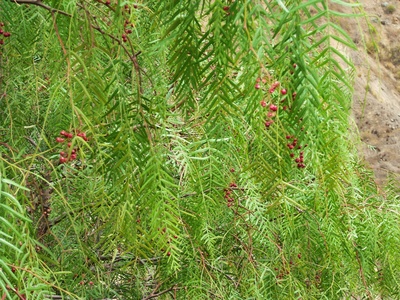
Peruvian Pepper Tree
Graceful, drought-tolerant tree with pendulous foliage and peppery berries. Used for shade, windbreaks and ornamental plantings in arid landscapes; tolerates heat and poor soils.
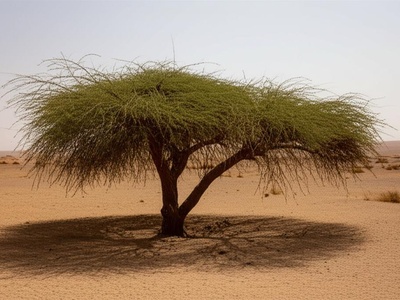
Moringa (Arabian)
Sparse, drought-tolerant tree with nutritious seeds and leaves; adapted to harsh coastal deserts. Used locally for food, oil, shade and medicinal purposes in arid regions.
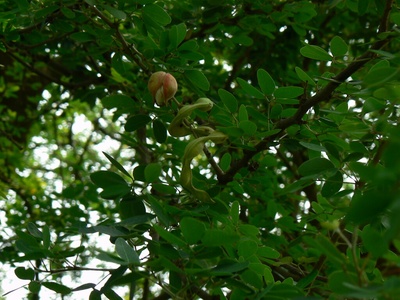
Manila Tamarind
Tough, thorny tree producing edible pods and dense shade; tolerates drought and poor soils. Frequently used for living fences, shade in dry yards and informal agroforestry.
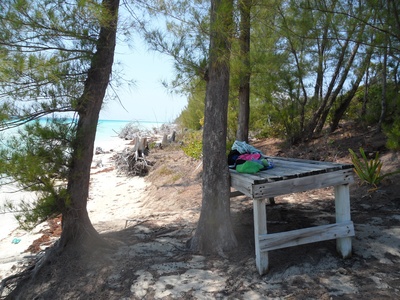
Casuarina (She-oak)
Fast-growing, salt- and drought-tolerant tree that stabilizes sandy soils. Commonly used for windbreaks, coastal stabilization and as a rapid shade tree in dry, saline landscapes.
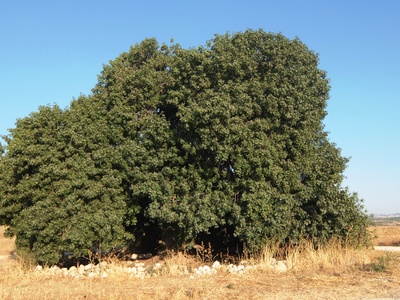
Pistacia Atlantica
Hardy, drought-tolerant pistachio relative that thrives on rocky, dry sites. Used for shade, windbreaks and reforestation in arid Mediterranean and Middle Eastern landscapes.
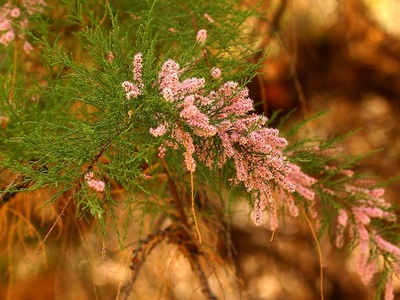
Tamarisk (Saltcedar)
Feathery, salt-tolerant shrub-tree that colonizes dry riverbeds and saline soils. Extremely drought-hardy and fast-growing; used historically for shelterbelts though invasive in some desert regions.
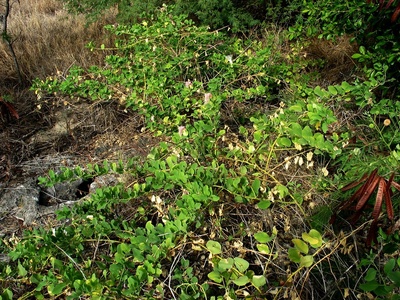
Prosopis (General mesquite)
Leguminous trees adapted to low rainfall with deep roots and pod-producing habit. Widely used for shade, fodder, fuelwood and restoration in drylands; species vary by region in size and tolerance.
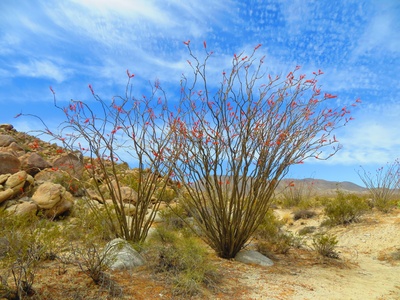
Fouquieria (Ocotillo)
Tall, spiny stems often treated as shrub but can assume small-tree form; drought-deciduous and spectacular when in bloom. Used as dramatic accent, windscreen and low-water xeric specimen in desert gardens.
